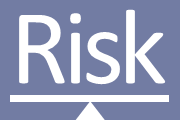|
[Another excerpt from my book. A bit unpolished, but sharing as-is since I've seen several companies falling into this trap recently. Footnotes have ended up just pasted in smaller font with FN: before them] In [a previous section, not included in this excerpt], we discussed the usefulness of considering a range of expert opinions — predictions, if you will — for important drivers of uncertainty in your business. We also discussed the benefits of bringing experts together, and engaging in a dialogue about the rationale behind their opinions. We even discussed formalized techniques where the dialogue is interspersed with iterative polling, to see whether the discussion increases consensus or hardens into concrete lack of consensus that can underpin useful alternate scenarios to consider. Unfortunately, there is the old saying, “if all you’ve got is a hammer, everything looks like a nail”. Thoughtful executives who decide to bring probabilistic thinking to their decisionmaking routinely tend to abuse expert polls like this to bootstrap a probabilistic range in a flawed way. Consider the example in the following table, showing the range of near-term Canadian to US dollar exchange rates forecasts published by major Canadian banks in late February 2018. These numbers represent the expected (or in some cases, most likely) exchange rates from the banks’ models, which are often quite complex and based on various macroeconomic, financial (e.g. interest rate), and momentum/sentiment-driven indicators the banks monitor or predict as well.
An executive needing to stick in a base-case assumption into their short-term financial plan could do a lot worse than to put in the average or median number from these figures, or even just consistently use the prediction of one bank they have chosen, without cherry-picking. But suppose they have now “got religion” about probabilistic thinking, and want not just a point-estimate single base case prediction, but a probability distribution, or at least error bars on the base case estimate. They have a hammer - probabilistic thinking - and see 6 nails: 6 bank estimates.
It seems beautifully set up to do something like the following: throw out the extremes (1.21 and one 1.30 for Q2) as potential outliers and create a range from the rest. “The dollar will most likely be between 1.22 and 1.30”. Or do something mathematically fancier, like calculating quartiles [FN: In this case, this yields roughly the same range. By the way, there are different algorithms for calculating quartiles and other percentiles; if you really want to do this, you should for instance read up on the difference in Excel between the QUARTILE.INC and QUARTILE.EXC function. But in this instance, the issue is elsewhere.] from the “sample” and using them as whiskers around the median: “P25/median/P75 = 1.22/1.26/1.30”. This is, however, alchemy. It looks impressive, but is meaningless. Each of the banks’ estimates is in itself the expected value of their respective probability distribution of the outcome. They may not have actually calculated it probabilistically, or even refer to it in that way, but implicit in their prediction is a sense that this is the “best single guess” that balances out reasons it might be lower or higher. It systematically averages away any thinking they may have done about plausible ranges of outcomes. If you’re not persuaded, think of this thought experiment. Suppose there were only one bank, which as a result of its internal deep analysis decided the dollar was exactly equally likely to have a value of 1.0 and 1.5, precisely. If asked for a single point prediction, it would be quite reasonable for the bank to say, “1.25”, the average. The alchemy described above would take that one data point as gospel, and say a dollar will be worth exactly 1.25, when in fact the analysis done would actually be saying 1.25 has zero likelihood, it’s either much lower or higher. This example is extreme, but layers of that type of thinking on a smaller level underpin each bank’s prediction. So - what can you do? First, looking at the range of predictions and using heuristics like throwing away the extremes and seeing what is left is a good *qualitative* indicator for the level of confidence you should have in any prediction. As it happens, usually the banks’ average predictions end up being fairly close to each other, within a couple of cents.[FN: The fact at this point in time they were not has hit the popular press, for instance https://www.theglobeandmail.com/report-on-business/top-business-stories/crazy-as-a-loon-the-chasm-in-forecasts-for-the-canadiandollar/article38019810/] The fact the range is now 8+ cents is itself indicative of a greater degree of uncertainty. Second, if you can, go to the source (or to other sources) to gain a true range of predictions, ideally with scenarios and rationales. For a Canadian company at this time, it is much more important to understand *how low or high could the Canadian dollar plausibly go*, based on how different factors evolve. If you want, you can use sampling on scenarios to give you a range, in the manner discussed in Section [X.X]. As mentioned there, there are all sorts of biases associated with selection and weighting of the scenarios, but you are not falling into the trap of reducing the range of uncertainty just because you don’t see it. Third, look for something else than nails, and bring out your screwdriver or glue or whatnot. For instance, looking at historical US/Canadian dollar exchange rates, it turns out that about 20% of the time, the rate changes by more than +-5% of the time over a 3 month period. And on average every second year, over some 3 month period the rate jumps by about 10%. Some version of this type of analysis is probably more useful in terms of putting semi-probabilistic error bars around any chosen single prediction than alchemy on the range of banks’ expected value predictions. [FN: Warning: as discussed in [xxx], a bug as well as feature is that the outcomes of such analysis depend on the choices you made in structuring it. In this instance, it is based on looking at the ratio of month-end exchange rates to the rate 3 months previous, over the past 10 years. And the 20% figure refers to 10% of the time having a decrease of 5% or more, and 10% of the time an increase of 5% or more. Whether this is right framing to use depends on the business problem this is being applied to. For instance, the ideal analysis is different if the goal is to estimate how much quarterly financial results will be influenced by (unhedged) currency exposures integral in the business, compared to if it is to stress test how much could be gained or lost on a single contract that generates a revenue-cost currency mismatch open over a period of 3 months. That is outside the scope of this book.] |
Martin PerglerPrincipal, Balanced Risk Strategies, Ltd.. Archives
February 2023
Categories |
Copyright © 2014-2020, Balanced Risk Strategies, Ltd. – Contact us


 RSS Feed
RSS Feed